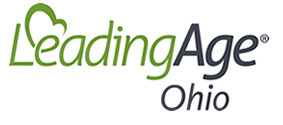Complete Story
02/15/2021
Executive Budget Language Released; Details Emerge
Executive Budget Language Released;
Details Emerge
On Thursday, Rep. Scott Oelslager filed the full language of the executive budget, giving providers a window into the details of various proposals that had previously been outlined in the “blue book” and in testimony. LeadingAge Ohio will continue to comb the 2000-plus-page document to identify all those sections impacting aging services providers. In the meantime, the following is a brief summary of some of the items contained in the budget:
Nursing home proposals
- Nursing home bed buyback program. The Ohio Department of Health (ODH) proposes to dedicate $50 million to a voluntary bed buyback program during SFY 2022 and SFY 2023. To participate in the program, the nursing facility must be located in an “overbedded” county, and after the bed is surrendered, the county must still have sufficient beds to meet its bed need. ODH will develop criteria for evaluating competing applications, and priority will be given to providers who are current with franchise permit fees. Providers are prohibited from applying for a CON or initiating a change of operator while an application is pending. (pg. 1830-1832)
- Director of Health authority. The executive budget includes a section which would give the Director of Health authority to issue orders for immediate actions, including transferring residents and appointing a temporary administrator, when resident health and safety are threatened. Failure to comply with orders may result in a $250,000 fine per offense. (pg. 926-928)
- Continuation of the quality incentive payment for one year. As anticipated, the budget proposes continued funding of the quality incentive payment (QIP) for one year. One significant modification is that -- rather than the current provision which excludes providers from the QIP based on occupancy -- the executive budget proposes to exclude the bottom third of nursing facilities, based on their total points earned for the QIP. The language also calls for the $1.79 quality withold—previously awarded based on performance on another set of quality measures-- to be rolled into the QIP payments. Finally, the language allows facilities undergoing a change of operator to receive the QIP based on the points total preceding the change of ownership.
- Following the one-year continuation of the QIP and no later than January 1, 2022, the Department of Medicaid, in consultation with the Departments of Health and Aging, will develop new quality standards for nursing facilities, taking into consideration stakeholder input. (pg. 1883-1886)
- In order to receive the “new” quality payment, a facility must have a home office located in the state, and “key staff” must be residents of Ohio and based there. These key staff are as follows, with additional requirements:
- Nursing Home Administrator: must be employed 40 hours per week.
- Medical Director: must be engaged for at least 32 hours per week in operation of facility, and have three years of training in a specialty area.
- Director of Nursing: must be employed 40 hours per week.
- Quality Improvement Director: may be a nurse, physician or physician assistant. (pg. 1887)
- Adds $100 million to the QIP calculation: $50 million in SFY 2022 and $50 million in SFY 2023.
- Aggregate payments to support Medicaid capacity. ODM will calculate and compare Medicaid census for SFY 2019 and SFY 2022. If SFY 2022 is lower than 90 percent of SFY 2019 levels, the Department of Medicaid will issue lump sum payments to providers not to exceed $50 million in total. ODM will develop rules related to the formula and method of distribution of the lump sum payments. (pg. 1889-1890)
- Delays rebasing, which per statute should have occurred on July 1, 2021, until July 1, 2023. (pg. 1890)
- Makes modifications to the processes by which special focus facilities that are not improving in a timely manner may have their Medicaid provider agreements terminated. (pg. 1426)
- Allows ODH to decrease survey frequency to once every 30 months (pg. 926)
- Invests $5 million in technical assistance for nursing facilities (pg. 1665) as part of $12 million in statewide aging initiatives.
LeadingAge Ohio continues to work to confirm the reported 4% increase to nursing, aide and personal care services rates under Ohio’s Home Care, PASSPORT and Assisted Living waivers, as well as the correct appropriations for each, and also looks forward to confirming details related to reimbursement changes for home-delivered meals. One glaring omission from the budget is sorely needed increases to Ohio’s adult day reimbursement under the PASSPORT waiver.
LeadingAge Ohio reminds members that the executive budget is only the starting point for a 6-month budget process, and that these proposals will likely change significantly over the coming months. Any budget-related questions may be directed to Susan Wallace, Chief Policy Officer, at swallace@leadingageohio.org.
